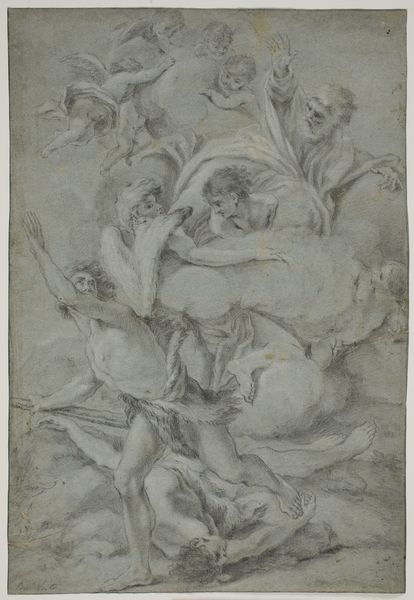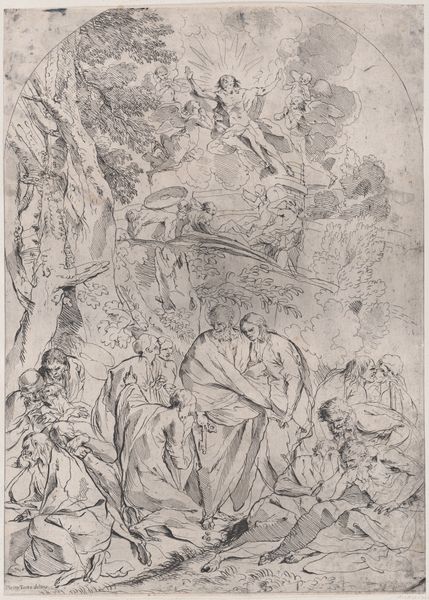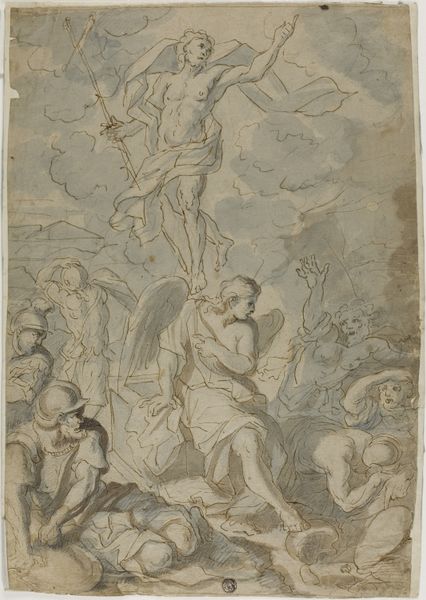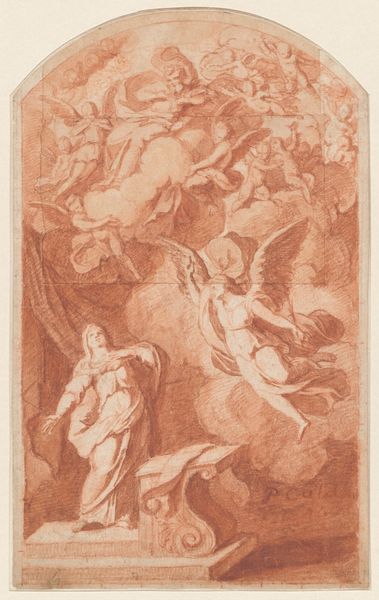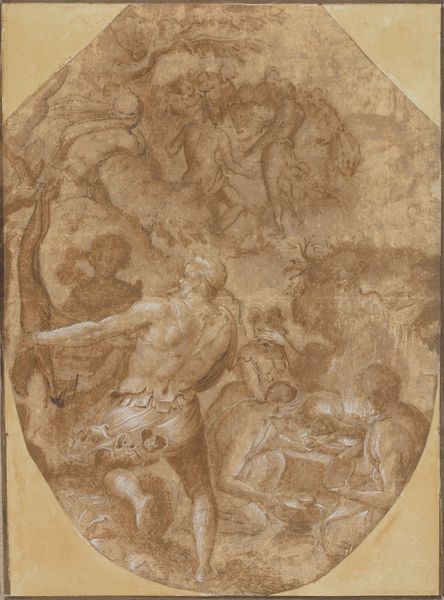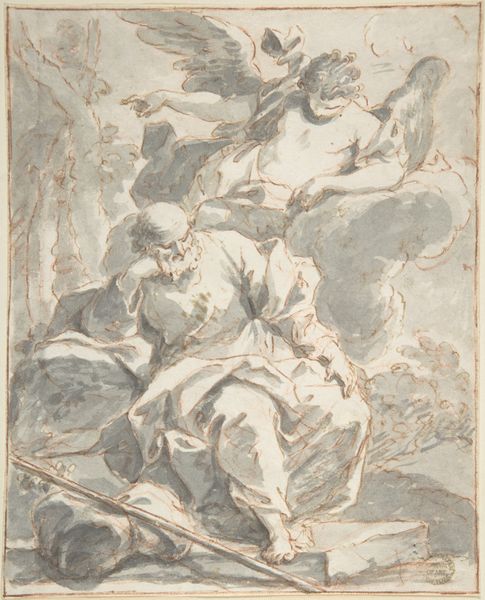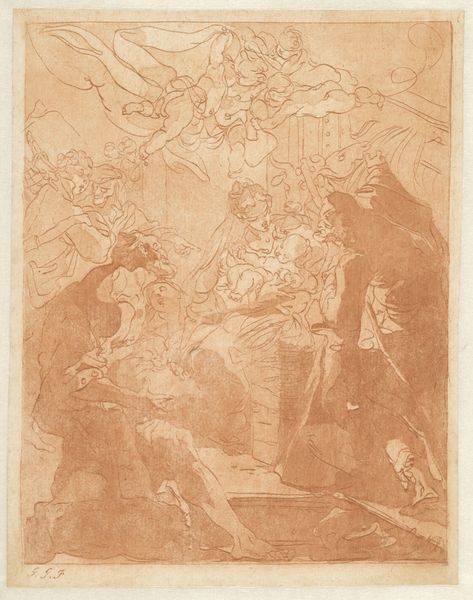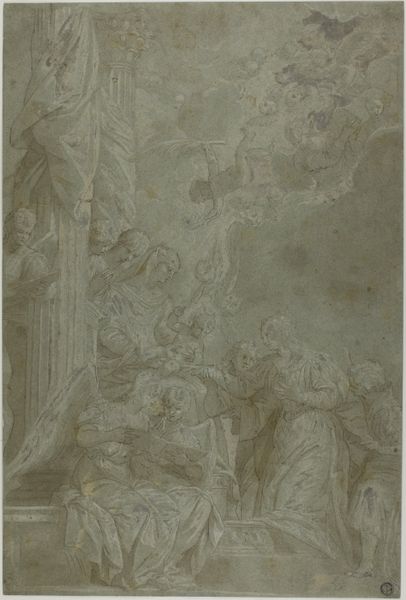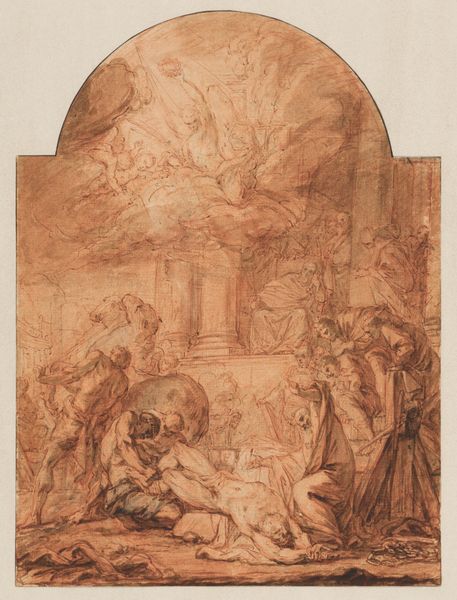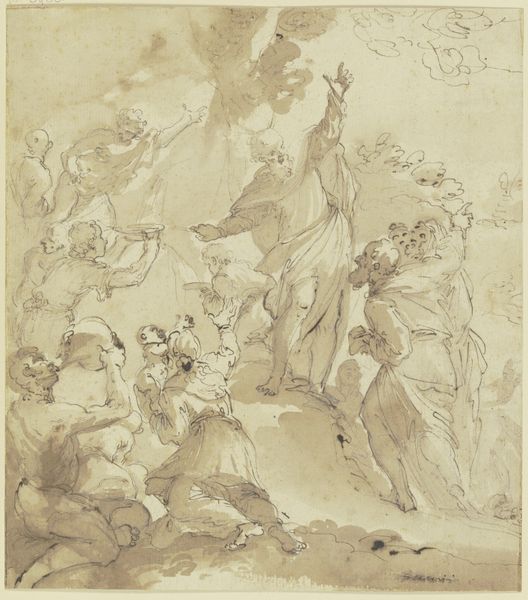
drawing, paper, ink
#
drawing
#
baroque
#
figuration
#
paper
#
ink
#
history-painting
Copyright: Public Domain
Curator: Ah, yes. Here we have Pietro Antonio de' Pietri's drawing, "God the Father appearing to Moses," held here at the Städel Museum. It's rendered in ink on paper. The drama positively leaps off the surface. What strikes you first about it? Editor: A sort of muted grandeur, perhaps? The smoky ink, the evident labor – I’m instantly considering the paper’s source, the grinding of the ink… it all contributes to the visual weight despite the ethereal subject. It feels less heavenly pronouncement, more the slow accrual of craft. Curator: Yes! "Slow accrual," that's beautiful. The ink wash technique, building layer upon layer, conveys both a sense of the divine, but also this immediacy, doesn’t it? Pietri teases the forms from the nothingness. It’s like he's searching for something just beyond our grasp. I can feel my own spirit being invited. Editor: Certainly, but let's consider that “nothingness”. The paper itself is a product, a result of very tangible processes. Even the act of sketching this moment from religious text involved labor, not only artistic, but perhaps reproductive labour in service to some patron who ultimately controlled both artistic creation and the distribution of materials like paper and ink. Curator: That’s true. One must consider the political dimensions embedded in materials, even religious scenes. However, for me, I am completely swept away by how de' Pietri gives visual form to something unseen. Do you think, the way he deploys chiaroscuro, heightens this drama of encounter? Moses appears quite humbled to be the object of God's communication in the rendering, and what about the use of divine figures here to legitimise that specific authority? Editor: Absolutely, these Baroque artistic choices bolster those patriarchal messages through the materiality itself, shaping narratives via physical methods. The texture of faith, etched into every stroke. And each subsequent edition of ink or change of medium furthers God's authoritative nature; his message growing bigger with each reiteration or act put to fulfilling it's divine will! Curator: I’m intrigued about the multiple iterations within this single work – a study perhaps, with corrections evident as it goes! It's fascinating to consider how the material's humble status contrasts so starkly against the sublime, powerful vision represented in Pietri's “God the Father appearing to Moses." Editor: Yes, tracing that opposition reveals a network of processes—revealing systems both worldly and artistic. An encounter with raw material gives rise not only transcendent experiences; its reveal shows their social position relative both artistically wise and concerning matters involving faith together making each other relevant points towards something very intriguing as things shift historically which is something viewers should contemplate deeply throughout understanding pieces just for historical perspective sake
Comments
No comments
Be the first to comment and join the conversation on the ultimate creative platform.
